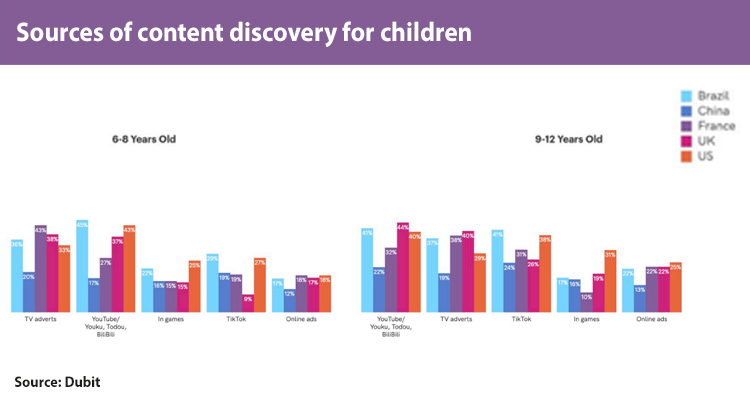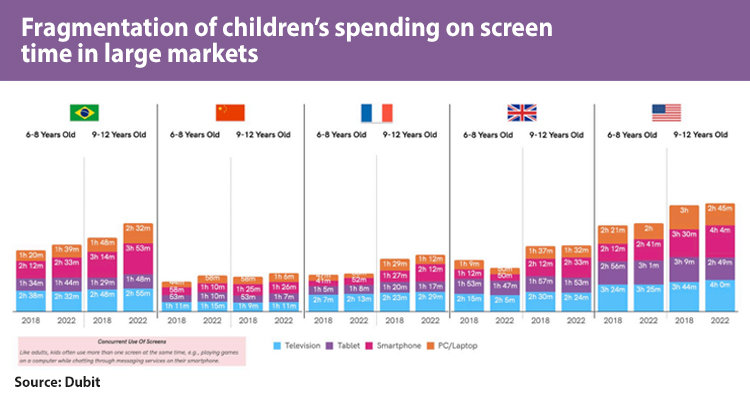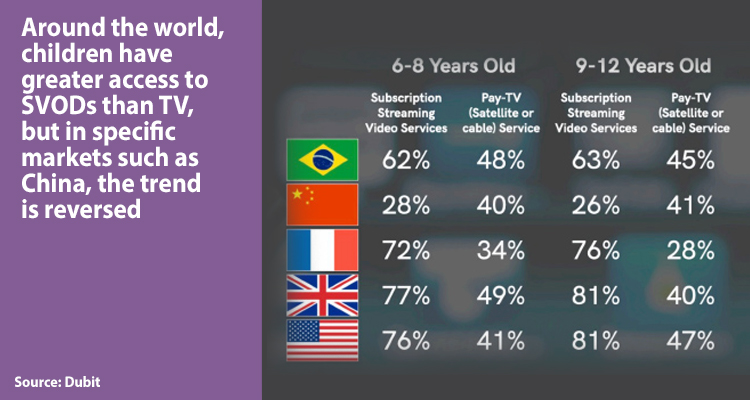One of the defining factors for players in the children’s content segment today is their ability to understand how this audience thinks and consumes products tailored to them. That’s why many executives in the production chain focus on this highly important group.

A generation that has gained a lot of relevance is the so-called Generation Alpha or Gen A, which is the first to be entirely born in the twenty-first century. Their characteristic is that they are global, digital, and driven by visuals. According to McCrindle, 2.7 million persons from this generation are born each week, with India, China, and Nigeria being the top countries.
They were born in the era of the iPad and Instagram and raised in a global pandemic. To researchers, they represent a new beginning. That’s why in this report, we will review the factors shaping their lives, how they use technology, how they consume content, and why it’s so important to keep this in mind.
Mobile digital first
One of the defining characteristics of those born during these years is that this generation has never been without touchscreen, mobile, interactive media. This sets them apart from the previous generation. The consulting firm Dubit defines them as the iCan Generation because they didn’t have to adopt these technologies. That’s why when creating content for this audience, elements like interaction and multimedia are taken into account.
According to a survey conducted by Dubit, the 5 things that children aged 6 to 12 (the segment they focused on) tend to spend the most time on are: going out with family, playing with toys and games, playing digital games, watching online videos, and watching kids’ TV shows.
Three of the mentioned activities are related to digital, making this a generation that is ‘wired’ for interaction, creation, and participation. With screen saturation throughout their formative years, they have been tapping and swiping through ‘easy to play’ games. This makes them more likely to feel engagement at an older age towards games, technology, and properties associated with these characteristics.
Decision-making ability
Another element that defines this generation is their way of making decisions regarding what they consume. According to the same study by Dubit, the consulting firm believes that this generation thinks carefully when making decisions, based on how much time it will take, the time of day, the device they will use, and who they will consume this content with. The report emphasized that ‘Emotional Scheduling defines how kids’ media consumption evolves through the day in order to satisfy specific needs at different times’.

Time fragmentation
The fragmentation in the time of consumption for Generation Alpha is a factor to consider when targeting a product to this audience. In the United States, the segment of children aged 6-8 has 5 hours and 31 minutes available on weekdays, and 9 hours and 41 minutes on weekends. For children aged 9-12, it’s 4 hours and 43 minutes on weekdays, and 9 hours and 10 minutes on weekends.
This index is very important for media owners or content makers to keep in mind because they must remember that in a kids’ world ‘everything competes with everything’, so they do not allocate specific time to a specific activity. Therefore, TV doesn’t compete with other TV shows, but with the entire consumption ecosystem.
Additionally, access to devices seems to be fairly consistent across various regions of the world, with increasing variations and differences in parental control. Access to devices is not uniform; it is highest in the UK and the US, and even in Brazil. In France, access to tablets, smartphones, and computers is lower among 6-8-year-olds, reflecting the general pattern seen in our data for continental Europe where parents control access to tech more at this age. China has the lowest access to devices out of the five nations.

Content
With all this in mind, what should an industry player consider? The report explained that this children’s segment is more likely to discover new things. In the USA, for example, children aged 6-8 are more likely to consume new content, be it television, reading, interaction, or use. The high figure is repeated in markets like China, France, or Brazil.
Alongside this, the 5 outlets where children tend to discover new brands are TV adverts, platforms like YouTube/Youku/Todou/BliBli, in games, on TikTok, or in online ads. Of all these, TV and platforms stand out as the sources for discovering new content in the studied markets.
Content creators must consider how their content is consumed to establish a cohesive ecosystem for their intellectual property. They should contemplate where it fits in a Gen A child’s daily routine – addressing their requirements, moods, available time, and whether they are alone or with others. It’s important to identify the need your IP fulfills. Does it align with prevalent entertainment genres and the motivations driving content selection? How will they discover it? Can it be enjoyed during brief moments of downtime or also during extended leisure periods? Is it suitable for solo consumption or better enjoyed with company?







